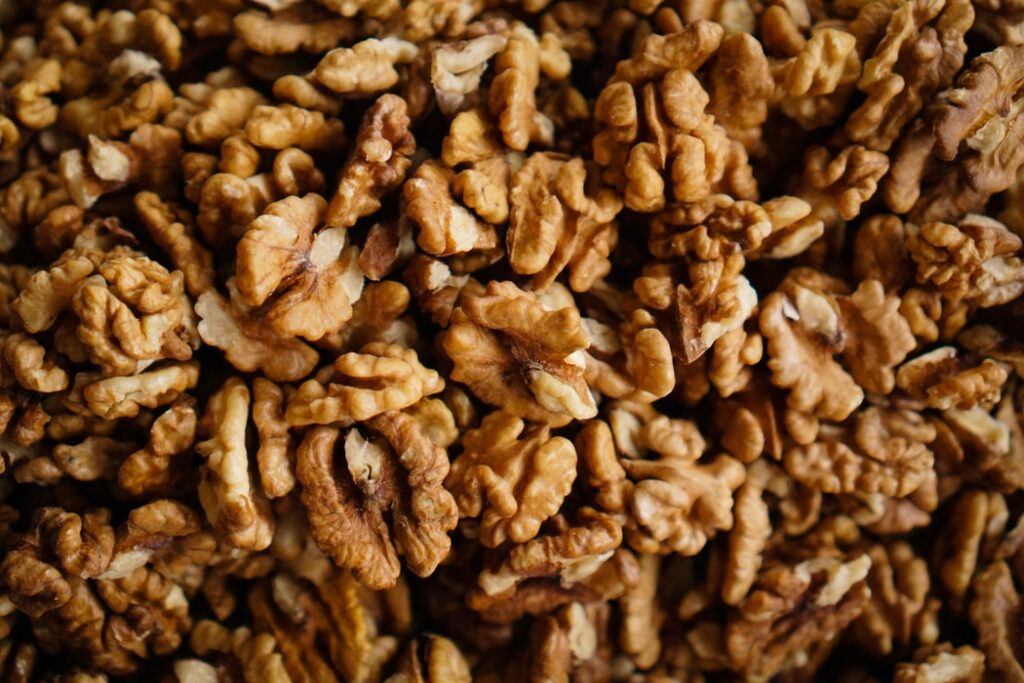Allergies are an immune response to any allergen including insects, birds, and food. With the resurgence of food allergies in children, it is understandable that you and other parents are worried about providing your child with a balanced diet and appropriate growth while avoiding allergens.

Nevertheless, there are a few things that are under parental control to put the nutrients into your child’s system while keeping the food allergies at bay.
Visit Your Medical Provider
An appointment with your medical provider or family doctor is a must on your to-do list. They will review your child’s lab tests and then decide which foods should be completely avoided and which foods you can be a bit more lenient with.
A food plan can then be made and any gut support or supplements for allergy treatment
your child may need can be included. For instance, children with gluten sensitivity can occasionally enjoy a gluten diet along with gluten digesting enzyme supplements.
You may also be advised to carry an epi-pen in case of emergencies.
Keep a Food Diary
A food diary can go a long way in identifying the food allergies of your children as well as point you towards the replacements needed to continue a balanced diet. You should also take your food diary to discuss nutrition with your allergist or medical provider during the visit.
The food diary will also indicate whether you need to consult a dietician. An allergen-free diet can include the omission or addition of many foods. Ensure that all these changes are made with proper medical advice and supervision.
Read The Labels
This is doubly essential for parents with children who have one or more food allergies. You must absolutely check the ingredients thoroughly and ensure that there are no allergens in the snack or meal they eat.
As manufacturers can often make slight changes to the ingredients they use, it is vital to read the label every time you decide to buy things. Remember to also look at the nutrition list to check whether they are getting the necessary nutrients.

Let People Know
It is always important to let others know about your child’s food allergies in order to avoid mishaps. Whether it is at a birthday party or a school party, you need to inform the organizers so that they can accommodate your child’s needs.
This does not make you a party pooper as you will find many parents with similar situations and most people are happy to help.
Alternatively, you can bake gluten-free dairy cupcakes for your little one. If you are already swamped with holiday preparations, then enlist the help of your friend or the bakery for an extra pair of hands.
Finally, it is crucial that your kid’s school knows about your child’s allergies so that they can update their record of pupils’ dietary restrictions. This will help the school authorities in the management of any emergencies that may arise as a result of severe allergies.
Don’t Follow Too Many People
It’s easy to be overwhelmed by hundreds of blogs online regarding allergen-friendly recipes and alternative options for allergens in food. You may be worried about the taste compared to the original or whether your kids would enjoy it.
The best solution to this is to avoid cluttering your headspace with too many options. It is best to stick with two or three of your favorite food bloggers whose advice has been useful for you in the past.
Educate Your Child
The most important person who should be aware of the food allergy is the person suffering from the allergy, i.e., your child. They need to be able to understand their dietary restrictions as well as the symptoms of a reaction so that they can immediately alert an adult. You also need to teach them to wash their hands before and after meals and to avoid sharing meals with others.
Moreover, it is important to encourage them to eat healthily and to praise them for their efforts. Remind them that there are others with similar problems so that they don’t feel left out. Mental reinforcement is just as essential as physical restrictions in such cases for better compliance from children. A few words of encouragement go a long way.
Milk Allergy
One of the commonest forms of food allergies in young ones is milk allergy. An important source of protein, calcium, riboflavin, vitamin B12, Vitamin A, and Vitamin D. Milk is also essential for growth and bone mineralization.
These nutrients are irreplaceable and must be compensated by alternatives. For instance, protein can be replaced by poultry, meat, fish, and legumes in older children but for babies, this can be done by taking hydrolyzed protein formulas among other things.
If you want to replace calcium, non-dairy food sources like leafy greens are an option. A rough estimate is that 1 cup of leafy greens has as much calcium as 4 ounces of milk. However, young children are unlikely to eat that many greens. Instead, you will need to search for calcium-fortified foods.

Other options include supplements and other specialized milk-free formulas. Furthermore, children older than one year can use milk substitutes like fortified rice milk, nut milk (oat and almond), and soy milk if your child can handle it. However, calcium-fortified juices are not a good source of other nutrients.
Egg Allergy
Egg allergy is another common food allergy in children where the child has to avoid all forms of eggs unless otherwise specified by a child specialist. The chief culprit for the allergy is egg whites which may be impossible to separate from the yolk.
You need to replace eggs with other high-quality proteins like meat, milk, poultry, fish, and legumes provided the child isn’t allergic to the substitution. This is essential as eggs are a vital source of biotin, folacin, iron, pantothenic acid, vitamin A, B12, D, E, and selenium.
If your child is allergic to some of the protein-rich alternatives to eggs or if you happen to be a vegan, there are many ways you can consume the right amount of protein as part of your usual diet.
Not only does your kid run the risk of losing out on the nutritional goodness of eggs but also other nutrients in an egg-free diet. They are deprived of B vitamins and iron contained in baked goods made with fortified flour. This must be compensated with other egg-free alternatives.
Wheat Allergy
Wheat is an important source of grain and a dietary staple in most cultures. However, for those with allergies, wheat can be replaced with other grains like rice, buckwheat, barley, and corn as allergies to these are uncommon.
As wheat is usually fortified with other nutrients, ensure that you choose fortified grains from a reputable source to avoid the risk of cross-contact. This is because a lot of essential nutrients may be lost in during the milling process like iron, folacin, and vitamin B complex.
You can also replace wheat flour with other grain flour but there is a risk that your recipe won’t taste the same.
Nut Allergy
Nuts like peanuts and tree nuts are an essential component of a balanced diet. They are rich in protein, vitamins like niacin, Vitamin B6, and E in addition to minerals like magnesium, copper, manganese, and many more.
Unfortunately, a lot of children suffer from serious nut allergies and have to turn to other food groups with similar nutritional value as a substitute.

Fish Allergy
Despite being a great source of protein and other nutrients like vitamin B6, B12, niacin, A, and E, many children are unable to eat fish because they happen to be allergic to them. Fish is also rich in minerals like iron, zinc, magnesium, and phosphorus so your child can miss out on quite a lot if they happen to be allergic to fish. Thus, it is best replaced by a protein of similar value like legumes and meat to get all these nutrients.
Make A Food List
A food list will help you identify allergic food as well as keep track of what you are feeding your child so that you don’t miss any ingredients. For instance, you can create a list and use that to label foods in the refrigerator and pantry as ‘can eat’ and ‘can’t eat’.
You can list food depending on the meal like breakfast, lunch, dinner, and snacks. Ensure that at least one of each food group is included in your meals for a balanced diet.
Mark your child’s favorite foods with a highlighter. But try to add variety to their diet by trying to introduce them to food from different countries.
Conclusion
Maintaining balanced nutrition for your child is important. Supplements such as collagen or vitamins can help those who suffer from nutritional deficiencies. It is possible to achieve that while avoiding food allergies with a bit of effort from you and the cooperation of friends and family.
Keep a food diary, and be aware of food allergens that affect your child and the best substitutes for them. Furthermore, be prepared to deal with emergency situations from time to time which means you should know exactly what to do when such a situation strikes. This will reduce the risk of attacks as well as any serious complications.